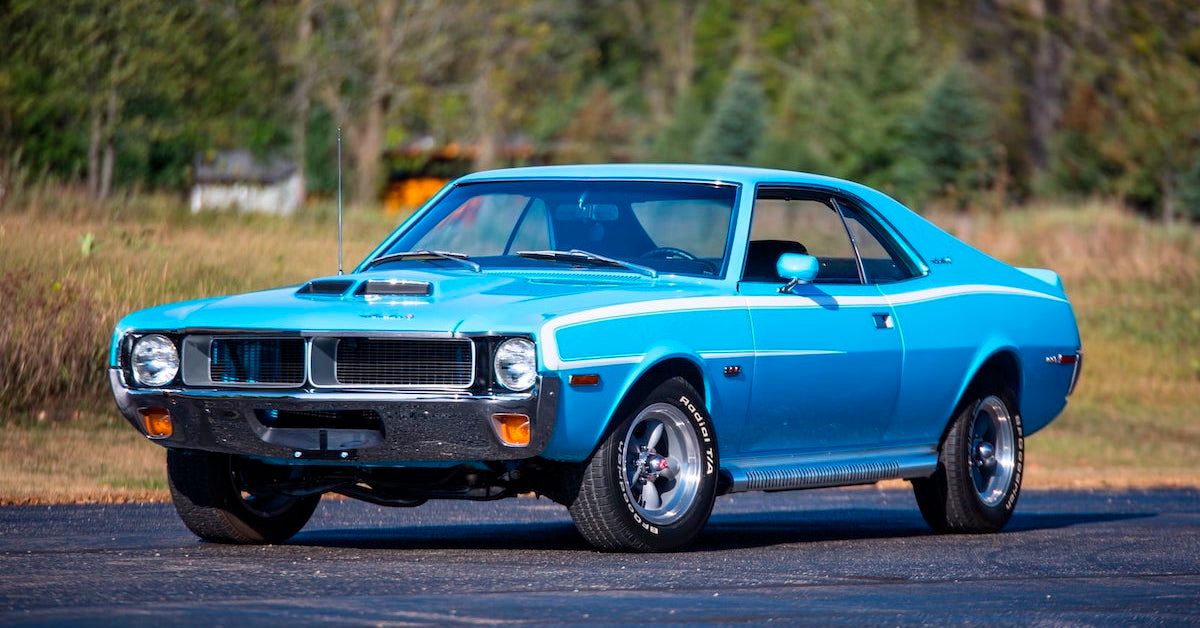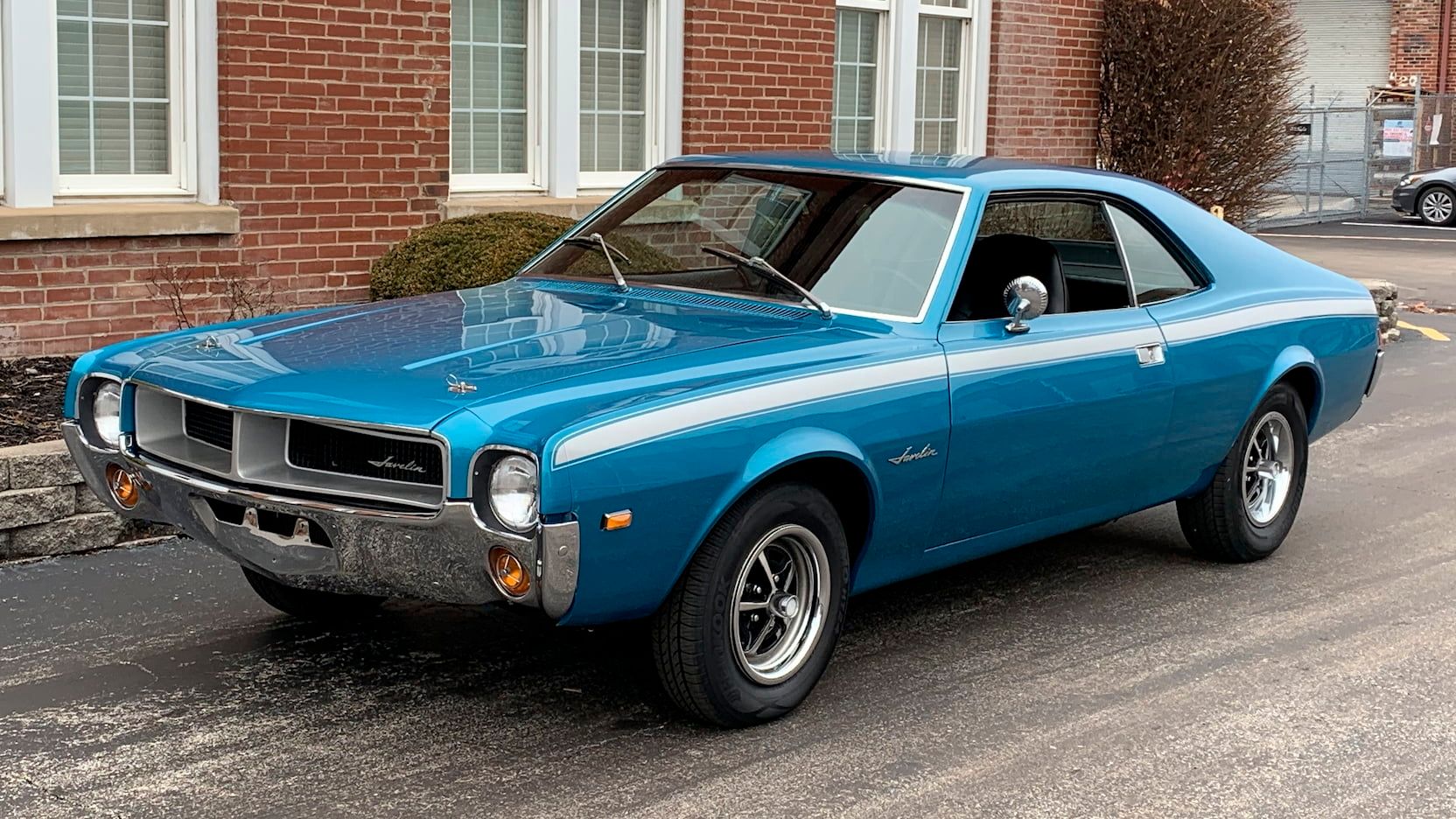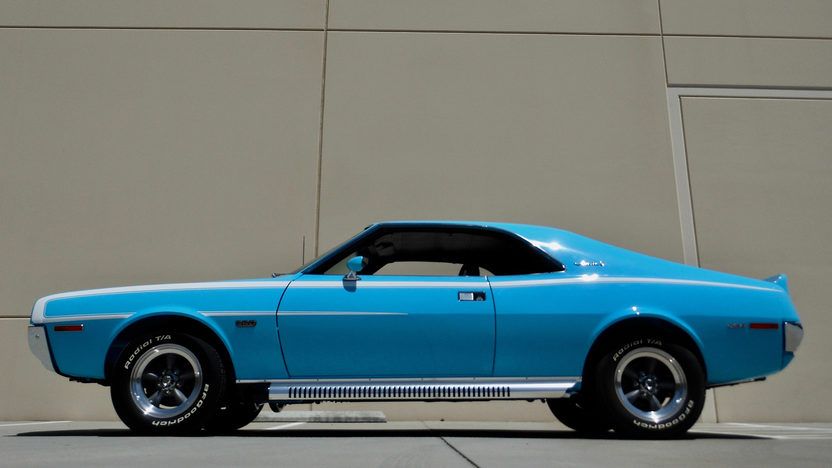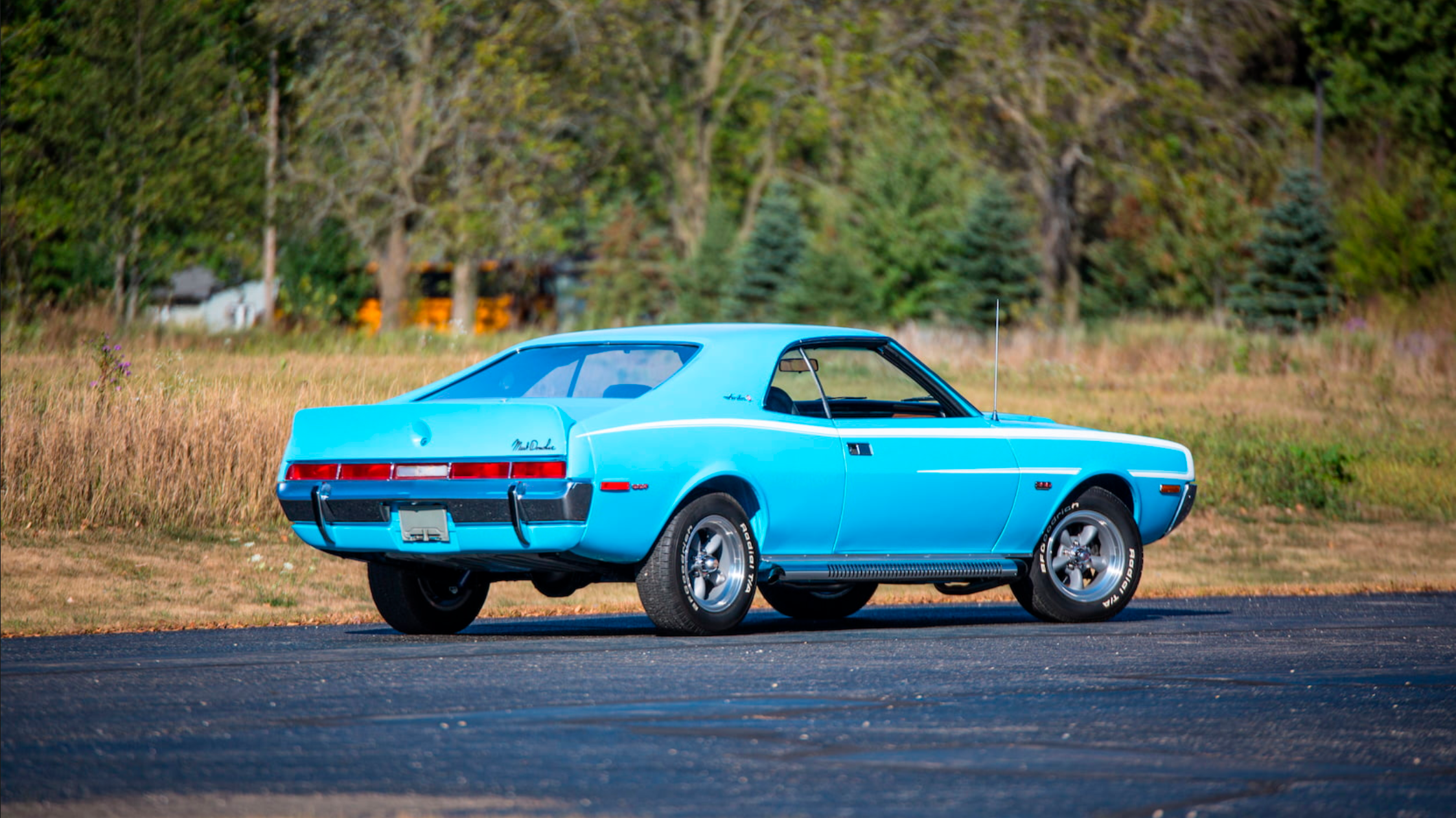American Motors Corporation (AMC) didn't have a fat purse to build new muscle cars to compete with contemporaries like General Motors, Chrysler Corporation, and Ford Motor Company. In 1968, the automaker netted $11 million in profits after three years of being insolvent. Later in 1969, AMC raked in just $4.9 million in earnings.
However, AMC only experienced a significant decrease in cash flow, not enthusiasm or creativity. So, it shouldn't have come as a surprise to the automotive and racing scene when AMC signed one of the most promising upstarts in the domestic car racing world – Mark Donohue and Roger Penske. The celebrated drivers would go on to make their marks as part of the AMC Trans-Am racing team competing with the AMC Javelin.
Despite halting production in 1988, AMC went on to join the league of select automobile manufacturers that charmed the world with their ingenuity. As a classic, the AMC Javelin stands underrated compared to its pony car peers like the ‘Stang, Camaro, Challenger, and Barracuda. But as Javelins like the special edition Mark Donohue goes to show, the SST-based V8-powered Javelin was far from a pushover.
The AMC Javelin's Background Story
The AMC Javelin is an automobile produced by American Motor Corporation from 1968 to 1970 and 1971 to 1974. The Javelin was a front-engine RWD pony car with various trims and a range of engine levels spanning two generations. Designed by the marque’s styling team led by Dick Teague, the Javelin got produced with different specifications and versions. AMC had a Javelin for everyone, from an economic pony trim to a higher-end muscle car variant.
Manufactured in Kenosha, Wisconsin, the cars got assembled under license around the world, including Mexico, Venezuela, Germany, Australia, and the Philippines – and got sold across the globe. Since the AMX variants (second generation) won the Trans-Am car race in 1971, 1972, and 1976, it became the first of its kind used by the United States law enforcement agency for highway police patrol.
Overview Of The Second-Generation 1970/71 AMC Javelin
Mark and his team joined AMC after dominating the racing track astride the Chevrolet Camaro in the 1960s. So, the 1970 AMC Javelin Mark Donohue Edition got produced to honor this new team. Trans-Am and Can-Am former champion Mark Donohue later went on to claim victory in the 1972 Indianapolis 500 astride the AMC Javelin. Sadly, he died shortly after during a Grand Prix training session.
The 1970 AMC Javelin Mark Donohue Edition had a 390 CI RAM Air V-8 engine, regarded as one of the best powerplants for AMC vehicles during that period. It also features an Isky Camshaft, chrome engine dress-ups, and an active hood scoop. Backed up by a 4-speed manual transmission, the AMC Javelin also comes with a hiatus collection that comprises power front disc brakes and power steering.
The exterior got painted in traditional white with black overturned C stripes, while the interior has the same black color. The interior featured plush seats with comfortable armrests, a Hurst shifter, wood-grain dash fascia, front bucket seats, a wood-rim steering wheel, a tinted windshield, AM radio, and a factory 8,000 RPM in-dash tachometer.
The rear wing featured Mark’s signature celebrating the brave race driver. The insignia got licensed for use in the SCCA series. This car rides on a set of 500 Magnum wheels with vintage Goodyear Polyglas tires with raised white lettering. Owners received their Mark Donohue Javelin with a proprietor's manual, proprietor badge, and Mark Donohue Edition dashboards.
Did we mention the Sidewinder exhaust system? The AMC Javelin Donohue dominated the 1971 SCCA season. The car remains an homage to AMC's high-performance muscle car heritage and the drivers who will always get remembered for their courage and skill.
The Emergence Of The AMC Javelin Mark Donohue Edition
Developed single-mindedly for racing, the Donohue Javelin SST rocked an impressive high-performance package right out of the factory. The high-performance "Donohue" package added an extra $1,000 to the base V-8 SST. It did not matter. AMC never planned to make them in large quantities, with just a little over 2,000 examples built at its Wisconsin plant.
AMC joined the Trans-am series in 1968 in partnership with Kaplan Engineering and became the only factory driver to finish every race competed. After two relatively successful seasons, AMC shocked the racing world by convincing Penske Racing to leave Chevrolet and take over the Javelin program in 1970. Roger Penske then brought in driver Mark Donohue.
AMC finished its first season with Penske in second place behind Ford, but it won the 2.5-liter+ category in 1971. AMC also won the Trans-Am Championship in 1972 and 1976, and it was at this point the company began rolling out special model Javelins to capitalize on its racing success.
These include the Mark Donohue Edition, a limited-edition SST-equipped Javelin with a Donohue-designed rear spoiler, and just 2,501 examples made, which was enough for AMC to homologate it for the 1971 Trans-Am season. Just in case you're wondering, SST is short for Super Sports Touring, which essentially denotes a sportier and more luxurious version of the base-level Javelins.




